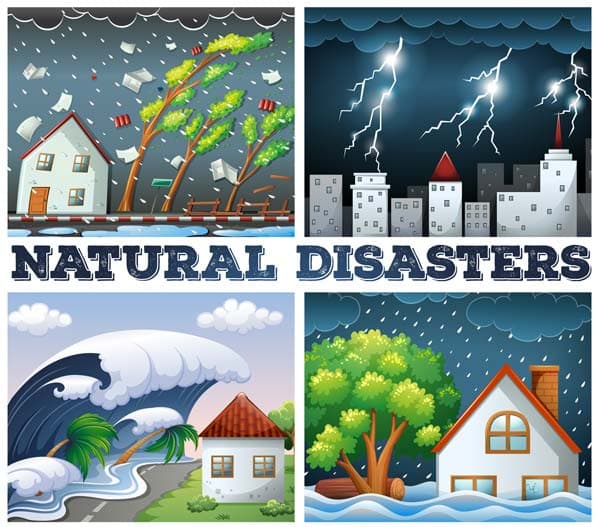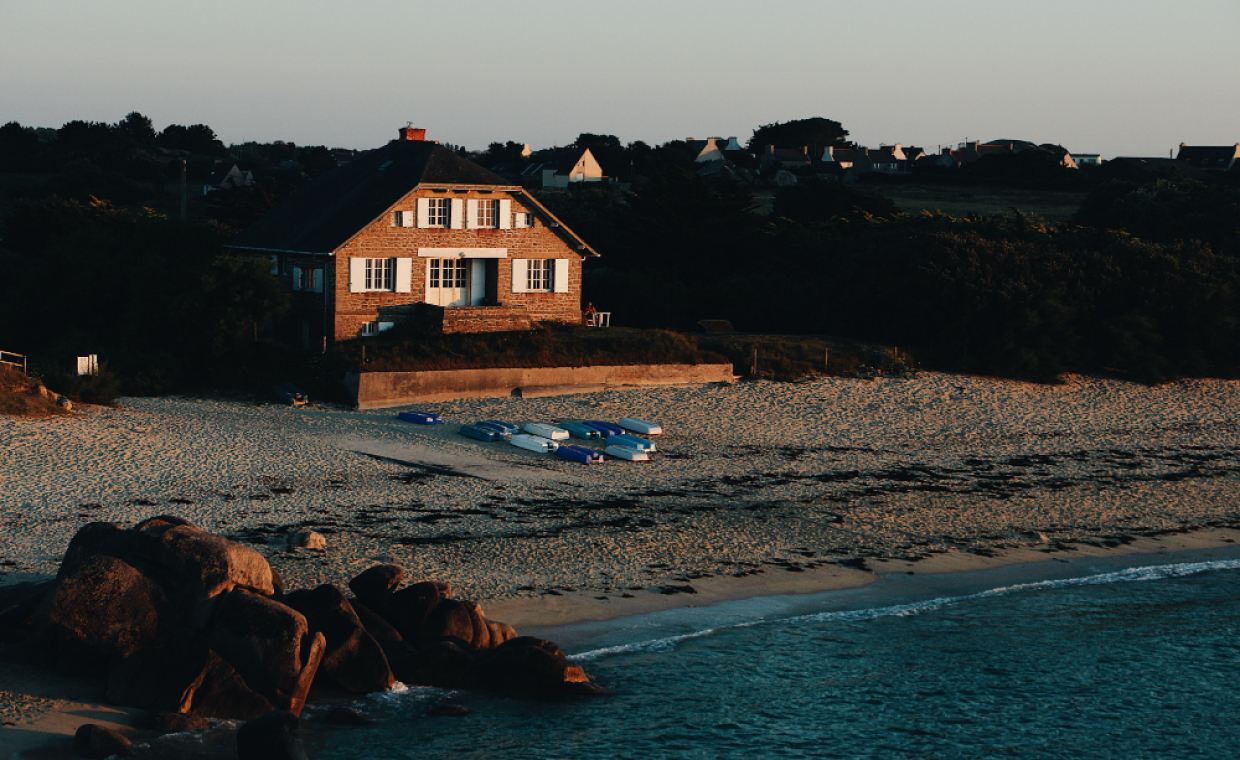
Disasters are sudden accidental events of great magnitude that cause considerable damage to life and property. None of the disruptive technologies introduced by humans have been able to reduce the adverse impact of natural calamities. Sudden and unpredictable disasters like hurricanes, earthquakes, and floods have often made us humans helpless. Regardless of the preventive measures we take, humans cannot claim even a single part of the earth as “disaster-proof”.
What is disaster?
According to ‘Prof A. Balsubramanian’ (Author of book called Types of Disasters), Disasters are a sudden, accidental event of great magnitude that causes considerable damage to life and property. They are unanticipated, drastic and normally occur without any alarm or warning. History has always been supportive and evident to the fact that disasters were the prime reason for the damage and loss of human lives and their properties.
Science is advancing and speeding at its own pace, technologies have been upgraded and updated from time to time, yet, “unfortunately” we haven’t achieved the level or made advancement to the extent where we can stop natural calamities or disasters from happening or, at least, face them reasonably. These sudden and unpredictable events have made we humans helpless often!
Though we cannot escape nature’s wrath, we can soften its impact on our lives and assets by being aware of them. Dive in to know the different types of natural disasters that can strike different parts of Earth and cause tremendous damage to life and property.
Types Of Disasters
Disasters can be mainly categorised as – natural and man-made. Mother Nature has always been at the giving end. However, she can be equally devastating, highly destructive, and unforgiving at the same time. This catastrophic manifestation of Nature in the form of floods, hurricanes, earthquakes, volcanic eruptions, landslides, forest fires, and tsunamis is referred to as a natural disaster.
On the other hand, a man-made disaster is the one that involves an element of human intent, error, negligence, mishandling of dangerous equipment. For instance, train accidents, aeroplane crashes, or a building or flyover collapsing due to faulty engineering are man-made disasters.
Different types of disasters are classified in terms of their nature and extent of impacts. Let categorically understand various forms of disasters. Generally, According to Disaster Management in India (Ministry of Home Affairs – Government of India), Disaster can be categorised as,
01. Natural Disasters
a) Flood
b) Hurricanes
c) Earthquake
d) Volcanic Eruption
e) Landslide
f) Fire
g) Tsunami
h) Drought
i) Avalanches
02. Environmental Emergencies
03. Complex Emergencies
04. Pandemic Emergencies
In this article, we will focus on the types of natural disasters, its impact, and how you can create a disaster management plan to safeguard yourself.
01. Natural Disasters
As shared earlier, there are various kinds of natural disasters. Let us study them one by one.
(a) Floods:
A flood is a situation that typically occurs in the monsoon season. Flooding is a temporary overflow of water on to the land, that is normally dry from water bodies such as rivers, lakes or ocean where the waters flow over top embankment, floods occur during heavy rain or when snow melt for fast or where a dam breaks, when the water moves beyond its normal boundries. Flash of floods are the most dangerous sometimes due to heavy rain, the city’s drain fails to discharge storm water and it floods the city’s routes and even houses.
Due to the rise of sea tides into rivers and lakes the rainwater overflows on the land, submerging it completely. The concentration of rain increases on the ground due to the problem of sediment deposition, drainage congestion, and synchronization of rivers.
Floods can also be caused due to other natural disasters like thunderstorms, hurricanes, and tsunamis. Since floods cause massive damage to lives and the economic wellbeing of an area, it takes a lot of time for people to live a normal life again.
Usually, the weather department of a particular country is able to predict the occurrence of a flood. Though people are alerted ahead of time they face tough times during floods. This is because most people do not know what’s to be done when hit by this natural calamity. The below-mentioned tips will help you stay safe in case a flood is predicted.

(b) Hurricanes:
Hurricane is a high-intensity cyclone with a violent wind, occurring over the ocean and traveling towards the land. A cyclone is usually named depending upon the location of its occurrence. For example,
- In the Atlantic Ocean and Northeast Pacific, it’s referred to as the Hurricane.
- In the Northwest Pacific, it’s known as the Typhoon.
- In the South Pacific and the Indian Ocean, it’s called the Tropical Cyclone.
According to National Oceanic and Atmospheric Administration – USA, the hurricane in the Atlantic Ocean may strike between June 1 to November 30, and in the Pacific Ocean, it may strike between May 15 to November 30.
All cyclones cause heavy loss of life and damage to the properties. Hence, it is better to be prepared in case of an impending cyclone. Refer to these Do’s & Don’ts when a cyclone strikes.

(c) Earthquake:
The earth’s crust is made up of uneven layers of soil or rocks which consist of faults at many places. These geological faults appear as planar fractures or cracks on the earth’s crust. The geological faults form a tectonic plate which moves over time. At times, these moving plates release higher energy in the form of the wave, causing the earth to shake. Simply put, this shaking of earth is known as an Earthquake.
The Richter scale is used to measure the magnitude of the earthquake. The severity of shaking at a particular location is said to be worst based upon the intensity of the earthquake. There’s a difference between the magnitude and intensity of the earthquake. To understand the difference, please refer to the topic – intensity v/s magnitude of an earthquake.
Now that you know what an earthquake is, it’s time to know how you can protect yourself when it occurs. Get familiar with the Drop, Cover & Hold method to minimize the injuries and human loss during an earthquake. Also, go through the following tips to protect yourself and your loved ones during an earthquake.
(d) Volcanic Eruption:
A volcano is the most explosive vent in the earth’s crust from which the molten rock in the form of lava, a cloud of ash, and gases are released into the atmosphere. When the tectonic plates move, the magma (a molten and semi-molten rock mixture) present under the earth’s crust applies pressure at a particular location, causing the volcano to erupt. The vent continuously discharges hot lava which floats out on the ground.

(e) Landslide:
Landslides are defined as a downward movement of a solid mass like soil or rock under the effect of gravity. The melting snow, heavy rainfall, stream erosion, earthquakes, volcanic activity, human-made disturbances, or a combination of these can cause an earthy solid mass to become unstable and slide down under the influence of gravity. Landslides cause massive damage to property, injuries, and even death. It also destroys the water supply system and the sewer disposal system, and other utilities like power, gas etc. thereby disrupting normal life.

(f) Fire:
Fires can be human-made or occur naturally like a forest fire. Natural fire is usually started by lightning or due to the combustion of dry leaves or hay. A man-made fire is caused due to several reasons. Regardless of its source, a fire can cause massive damage to humans within a short period.

(g) Tsunami:
A tsunami is a series of large tidal waves often caused by an earthquake or undersea volcanic eruption. The huge tidal waves are the outcome of the displacement of a large volume of water in the ocean. As they travel towards the coastal areas, the waves build up to dramatically-great heights, destroy everything that comes in its way.
The height of the tidal wave increases continuously as it travels to the shore due to the decreases in the depth of the ocean.

(h) Drought:
- According to ‘Catherine Soanes, Sara Hawker & Julia Elliot’ (Author of Pocket Oxford English Dictionary), Drought is a deficiency in rainfall over a long period – a season, a year or several years. As a result, shortage in water causing adverse impacts on vegetation, animals and people.
- It is a standard, recurrent feature of climate that occurs in virtually all climate zones from very wet to very dry.
- Drought is a temporary aberration from normal climatic conditions; thus, it can vary significantly from one region to another.
- Drought is different than aridity, which is a permanent feature of the climate in regions where low precipitation is the norm as in the desert.

(i) Avalanches:
- The avalanche is a mass of snow under motion, sliding and rushing down a steep mountain slope.
- Under natural conditions, they arise due to disruption of the snow stability on a slope which has been affected by meteorological phenomena.

India and Natural Disasters
As per the report of a high-powered committee on disaster management published by National Centre for Disaster Management (India), floods, high winds, and earthquakes dominate (98%) the reported injuries, with ever-increasing numbers over the past ten years.
India is one of the most disaster-prone countries in the world
Prone to Earthquake – Over 65% of land area
Prone to Drought – 70% of the land under cultivation
Prone to Floods – 5% of the land (40 million hectares)
Prone to Cyclones – 8% of the land (8,000 km Coastline)
A major disaster occurs every 2-3 years, affecting nearly 50 million peoples annually. 1 million houses were damaged annually along with human, social, and other losses. From 1985 to 2003, the annual average damage due to natural disasters has been estimated to be 70 million USD.
Consequences of Natural Disasters
Listed below are the adverse effects caused by natural disasters:
- Loss of life.
- Injury to human beings.
- Damage and destruction of property.
- Damage and destruction of production.
- Disruption of lifestyle.
- Loss of livelihood.
- Disruption of essential services.
- Damage to the national infrastructure like the roads, railways, bridges, and ports.
- Disruption of government systems.
- National economic loss.
- Sociological and psychological after effect.
How Can We Measure the Impact of Natural Disasters?
According to ‘Patrick Mahar’ (Author of Disasters and their Effects on the Population: Key Concept), The factors taken into consideration while measuring the impact of any natural disaster are as follows:
- Intensity of hazard
- Duration
- Spatial extent
- The density of population and assets
- Time and frequency of occurrence
- Hazard + Vulnerability = Disaster
Conclusion
Disaster can interrupt the essential services, namely electricity, water, healthcare, sewage/ garbage removal, transportation, and communications. The interruption can affect the social, health, and economic networks of local communities and countries. The various kinds of natural disasters have a major and long-lasting impact on humans, long after the immediate effects have been mitigated. Poorly-planned relief activities can have a specific and significant negative impact on the disaster victims, donors, and relief agencies.
Disaster Management – Prevention and Preparedness
All local, regional, national, and international organisations are involved in mounting a humanitarian response to disasters. Each of them has a prepared disaster management plan. These plans cover prevention, preparedness, relief and recovery. Therefore, it’s best that everyone joins an established disaster management program rather than attempting individual efforts.
Here are a few key things to bear in mind when you face a natural disaster.
- Stay informed about the different types of emergencies that could occur and their appropriate responses.
- Make a family emergency plan.
- Build an emergency supply kit.
- Get involved in your community by taking action to prepare for emergencies.


































